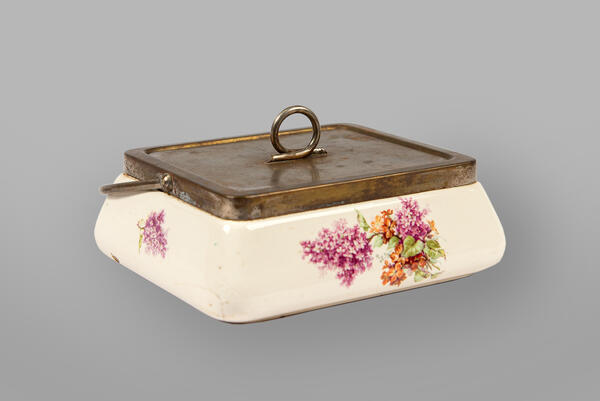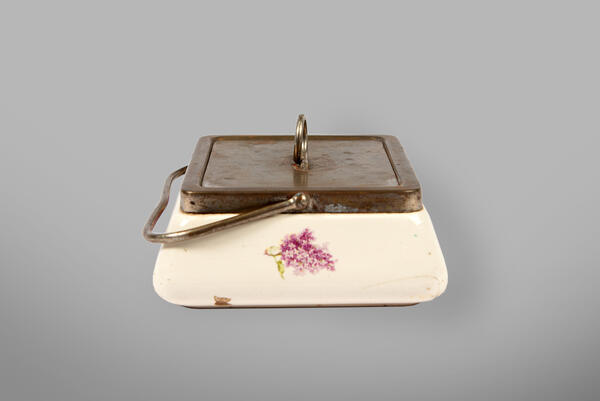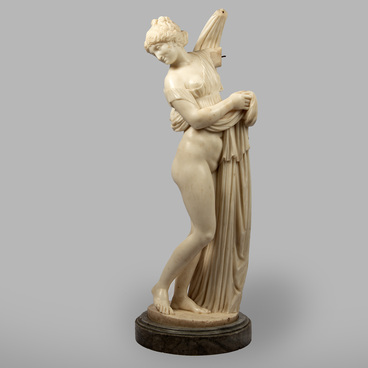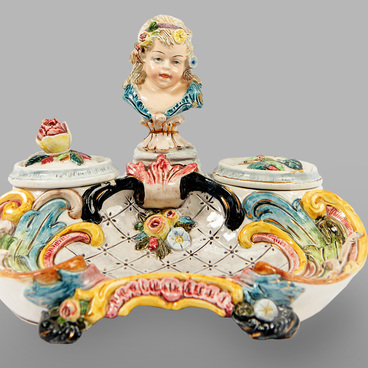The Kirsanov Local History Museum houses a faience sugar bowl that belonged to Elena Mikhailovna Boratynskaya. Elena Mikhailovna Boratynskaya (1880–1968) was the daughter of Mikhail Andreevich Boratynsky, nephew of the poet Evgeny Boratynsky. Mikhail Andreevich owned an estate in the village of Ilyinovka in Kirsanov District, where Elena Mikhailovna lived as a child.
Until the 18th century, sugar in Russia was a luxury product: cane sugar was brought along with other colonial goods (tea, coffee), and it was only available to the very rich. On March 14, 1718 Tsar Peter I issued a decree to start building the first sugar factory in Russia. The factory was opened on June 14, 1720. The sugar produced there was expensive, too, because the raw cane sugar was imported from abroad. At the beginning of the 19th century factories started to use sugar beet grown in Russia, so the price of sugar dropped. Almost immediately, beet sugar surpassed cane sugar in terms of production in Russia.
The old technology was used to pour the melted sugar into special molds and let it cool and harden. The result was a snow-white ingot, shaped like an artillery shell. In Russian this ingot was called a sugar head. It was taken out of the mold and wrapped into special thick blue paper which was called sugar paper. Sugar heads were made in different sizes, weighing one pood (16 kg), half a pood and so on. For tea drinking, sugar was chopped from it in pieces with a hatchet or knife and then crushed with special nips. In those days in Russia there were three ways of drinking tea: holding a piece of sugar between the teeth and sipping tea through it; having it in the tea, and — jokingly — “while looking at it”: with sugar not in the tea, but on the table as an indicator of the prosperity of the owners in case “the neighbors drop in”. A third variant appeared in the early years of the Revolution and the Russian Civil War. Drinking tea with sugar in it was considered a waste of money, as it consumed more sugar.
Until the 18th century, sugar in Russia was a luxury product: cane sugar was brought along with other colonial goods (tea, coffee), and it was only available to the very rich. On March 14, 1718 Tsar Peter I issued a decree to start building the first sugar factory in Russia. The factory was opened on June 14, 1720. The sugar produced there was expensive, too, because the raw cane sugar was imported from abroad. At the beginning of the 19th century factories started to use sugar beet grown in Russia, so the price of sugar dropped. Almost immediately, beet sugar surpassed cane sugar in terms of production in Russia.
The old technology was used to pour the melted sugar into special molds and let it cool and harden. The result was a snow-white ingot, shaped like an artillery shell. In Russian this ingot was called a sugar head. It was taken out of the mold and wrapped into special thick blue paper which was called sugar paper. Sugar heads were made in different sizes, weighing one pood (16 kg), half a pood and so on. For tea drinking, sugar was chopped from it in pieces with a hatchet or knife and then crushed with special nips. In those days in Russia there were three ways of drinking tea: holding a piece of sugar between the teeth and sipping tea through it; having it in the tea, and — jokingly — “while looking at it”: with sugar not in the tea, but on the table as an indicator of the prosperity of the owners in case “the neighbors drop in”. A third variant appeared in the early years of the Revolution and the Russian Civil War. Drinking tea with sugar in it was considered a waste of money, as it consumed more sugar.







